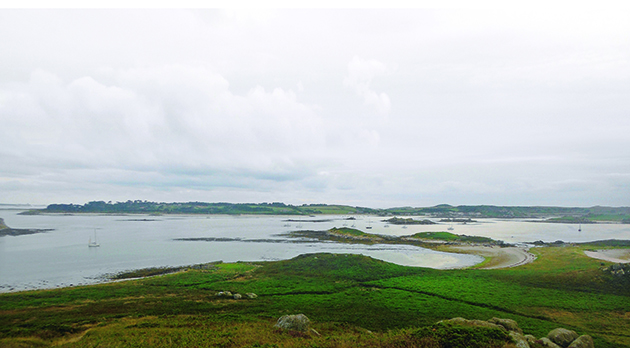Dag Pike explores one of the gems of the Isles of Scilly, discovering wildlife and gastronomic delights
St Agnes is a magical place, the last point of land before the Bishop Rock Lighthouse and the open Atlantic Ocean beyond.
It is really two islands, the main island and its close neighbour, Gugh, with the two linked by a sand bar that is only underwater from about an hour either side of high water.
It is the two coves either side of this sand bar that form the main anchorages on St Agnes.
Your choice of where to drop the hook will depend on the wind that is blowing but there can be good shelter in both, although at high water swells might top the sand bar and spill over.
The north cove is called Porth Conger and it provides shelter with winds from the north although there can be swell in westerly winds.
The jetty at the head of this cove is the landing point for tenders and is available at nearly all states of tide. Close by in the cove there are moorings.
It is best to drop the anchor on the west side of the cove, where you will be out of the path of the ferries coming across from St. Mary’s, although watch out for kelp beds.
Marking the entrance is the Cow and Calf rock with the main rock standing 8m clear of the water at high tide.
One of the better spots to anchor is across on the west side just inside the line of this rock.
Continues below…
Secret Isles of Scilly
Pilot book author Peter Kynes shows Dick Durham where the locals go when the Isles of Scilly get busy...
Watermill Cove, Isles of Scilly
A remote, attractive anchorage away from the crowds, for Mark Fishwick Watermill Cove is also a useful bolthole when St…
St Helen’s Pool, Isles of Scilly
Nestled between the northern islands of the Isles of Scilly, St Helen’s Pool enjoys nearly all-round shelter – a rare…
Here the bottom shoals quite steeply so as always, this is a time to run in with the sounder active until you find a comfortable depth to anchor in.
The southern anchorage is in The Cove, a deep inlet that is wide open to the south but well protected from other directions, although subject to swell at times.
Be aware that on the west side there is a cable running along the length of the cove.
The bottom shoals gradually as you head in so again use your sounder. Landing here will be by tender on the beach.
The old lighthouse is a distinctive feature of St. Agnes and it was the landfall light for shipping coming in from the Atlantic.
It was closed down once the Bishop Rock Lighthouse had been built out on the western rocks.
This lighthouse is on the main road that wanders across the island with a smattering of houses and some interesting shops and cafes.
The chances are that when you land you might not get any further than the Turks Head, the only pub on the island and the most south westerly in the UK.
Outside peak season it can be fairly quiet, mainly catering for the island’s 72 residents, but in the summer visitors flock here to enjoy real ale and fresh seafood.
Further along the road there are a couple of cafes and on the other side of the island, the UK’s smallest dairy. Troytown Farm shop stocks its own clotted cream, yoghurt and butter.
Birdwatchers love the island and you can switch from fine sandy beaches to rock pools in a matter of minutes.







